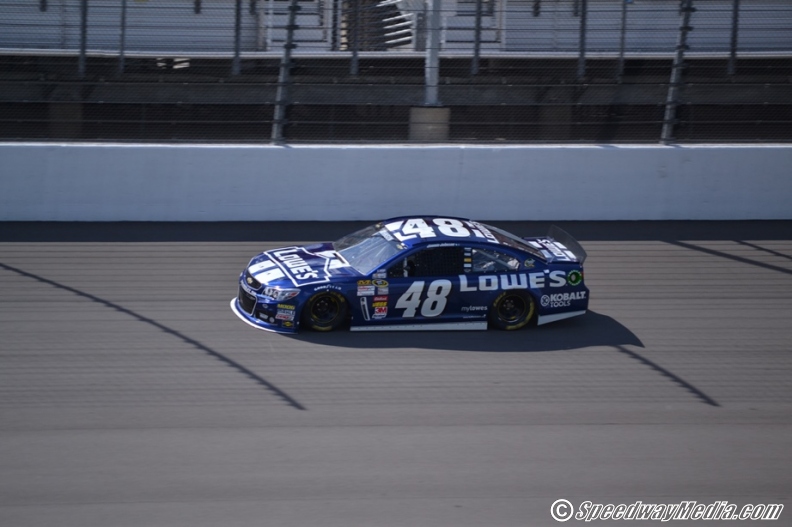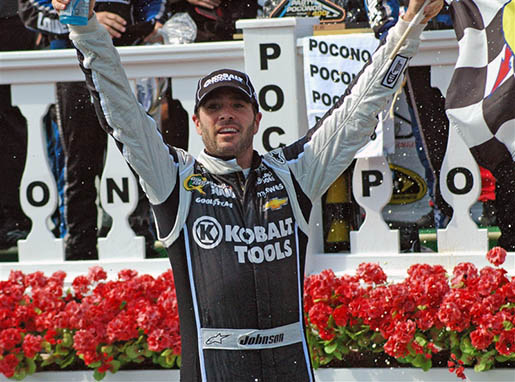On Monday, Honda Indy Toronto President Charlie Johnstone was at William-Ashley’s flagship location in Toronto, Ontario to unveil the trophies for this year’s Honda Indy Toronto. It marks the third straight year that William-Ashley has been part of the trophy designing.
The trophies, once again designed by Waterford Crystal, are crystal shaped bowls, varying in size and depth of design, depending on the winner. The main winner’s trophy features two IndyCars on the front of the bowl, cut into the glass carefully, with the Toronto skyline along the back of the bowl. They’ve also incorporated the Honda Indy Toronto logo as the bottom of the stem. Up-close photos of the trophies can be viewed in the Speedway Media Photo Gallery.
For the first time, Toronto will host two races over the course of the weekend. The first race will be on July 13th, with the second race on July 14th. Its part of the new double-header weekend format that IndyCar has developed for some of the road courses this year.
With that said, Johnstone discussed that he wants to expand the event further out to be able to have the whole family it. They’ll be food tasting, beer tasting, activities for the kids, as well as other things to keep the whole family entertained over the course of the three day weekend. It’s all about creating that perfect atmosphere.
2005 Honda Indy Toronto winner Justin Wilson echoed those thoughts saying the race is cool, but you got to have that entertainment package.
“You have to have something to entertain the wife and kids because I know from my experience, if I don’t entertain them, it’s not good,” he commented. “But I enjoy it. It’s a good track, very challenging. ”
Wilson was on hand for the unveiling and sat and spoke to the media about a number of topics, including driver training. With there being two races in one weekend, it makes that level of training extra important. Training is important because as Wilson mentions, each time you get on brake pedal, it’s like doing a full leg press and you’re doing that five times a minute. Wilson says training is also important because you don’t want your body to be your limit.
“All the races you go to – you don’t want your body to be the limit of how far you can drive the car,” he said. “The cars have advanced and become harder to drive, the gap between the cars is getting closer. So five years ago, you were five tenths off, you were fifth. Now if you are five tenths off, you’re 18th or 19th. You have to perform the maximum every single lap. It’s tough.”

Wilson’s training consists of cycling, swimming and going to the gym to lift weights.
“Just trying to do everything that I got the core strength, the upper body strength and then I’ve got the endurance,” he said. “The fitter you are during the race, the more you can deal with driving the car.”
With a normal street race, it can take drivers four to five days for their body’s to fully recover.
“Our cars don’t have a lot of suspension movement,” he commented. “I describe it as being put in a trash can and shaken around. When you get out, you’re covered in bumps and bruises and it just aches. On top of that, you’re fighting the car so your muscles ache.”
So come race weekend, the training that a driver has done before the weekend is going to be important. Another important aspect is nutrition to make sure you’re hydrated, as well as getting enough carbohydrates and protein for your muscles to recover.
“Hydration, that is the first thing that will get you every time,” he explained. “You got to make sure you’re drinking the right fluids, the right amount at the right time, so that you don’t lose concentration and that’s important. Also, a massage helps.
“Anything you can do to help recover and come back to run well. You want to come back and be at the same level on day two that you were on day one.”
The drivers have experienced the double header once this year already – Detroit – and Wilson commented that he noticed drivers were cautious on day one, while overly aggressive on day two.
“I think that could be the same thing again in Toronto,” he commented. “It’s going to be interesting.”
Wilson went on to say that he is looking forward to Toronto and remembers watching the race while in England racing go-karts as a kid.
“This is a big deal and watching this race as a kid back in England, this is a nice street race,” he said. “When you get here, you realize it’s more of a street fight. There’s a lot of action on track.”
The course, constructed at Exhibition Place, is a tight street course that Wilson says it gives it that cannon feeling for the straightaway. It also has a special unique feature to it. While the track is mainly asphalt, there are concrete patches in some of the corners, which adds another trick to it.
“The grip level changes,” Wilson explained. “You hit the concrete, the whole car slides and you kind of have a moment there. Right before you hit the wall there, the grip picks back up at the end of the turn. You just got to work at it, pick up more speed each time and sometimes you hit it wrong, hence why I hit the wall there (in 2011).”
Wilson was running in second late in the race trying to catch Will Power in 2011, and hit the patch the wrong way in turn eight, causing him to hit the wall.
“That’s the fun part of street racing and why this track is so challenging, yet so rewarding when you get it right,” he said.









